Cattleya orchid: description, types and secrets of growing
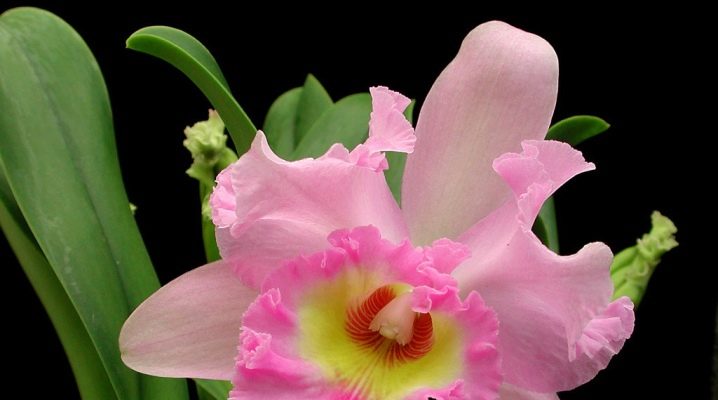
In almost every home and even in office premises, there are a wide variety of indoor plants. Their blooming species are especially pleasing to the eye. By the beauty of the flower, the undisputed leaders are plants from the orchid family. Various species of the genus Cattleya are rightly considered the most attractive.
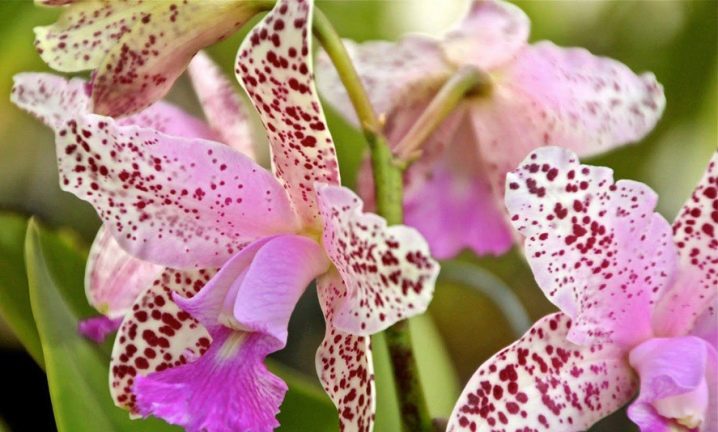
Peculiarities
The homeland of wild species of orchids is Central and South America. A fairly numerous genus of Cattleya today, according to some information, has 60, and according to others, 65 species, most of which live in the Amazon jungle and in Brazil.
Little was known about orchids until the early 19th century. Thanks to W. Swayson, some specimens of this amazingly beautiful flower fell into the hands of the English researcher of tropical plants and gardener Cattley. In his greenhouse, Cattley began to grow and then cross among themselves various wild species of orchids. Over time, the hybrids he bred were combined into a genus called Cattleya.



The genus Cattleya belongs to the sympodial group. One of its distinctive features is the aboveground root (rhizome), due to which they grow horizontally. The root, in addition to the main body, also has adventitious, or aerial roots. In Cattleya, they originate from the rhizome areas of the shoots. The powerful root system of the plant allows it not only to firmly hold thick fleshy shoots, but also to participate in photosynthesis, absorb water and nutrients from the air.
In the vertical direction, the growth of orchids is due to the shoots. The height of indoor plant species, as a rule, varies between 30-45 cm, and in natural conditions, individual individuals reach a one and a half meter mark.
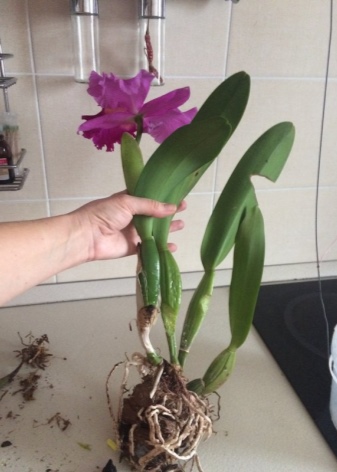
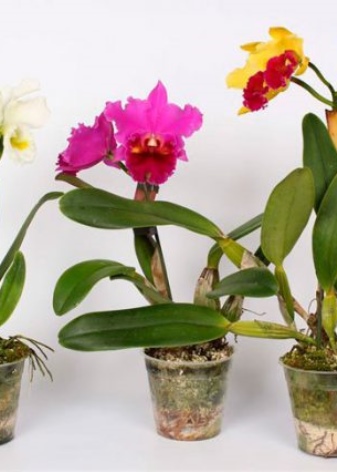
The shoots of the sympodial type of orchids have a significant thickening in the lower part, which is called a pseudobulb or false bulb, as a rule, with two, and in some cases with three internodes. In wild plants, the bulb serves as a store of nutrients in extreme conditions, such as drought, or, conversely, excessive moisture, and in the phase of active growth.
For hybrids bred specifically for home breeding, the functionality of the false bulb is slightly reduced, especially if the plant is properly cared for, but it is not useless, since it is the pseudobulb that is the source of the growth of leaves and peduncles.

Depending on the number of leaves, one-leaved and two-leaved plants are distinguished. In shape, they resemble an elongated oval with a pointed upper end. The leaves are dense, fleshy to the touch, and have a uniform green color.
Each type of orchid from the genus Cattleya has its own flowering period. The peduncle is formed in the axil of the leaves and is covered with bracts, which form a small case with their structure and location.
Upon reaching a certain height, the top of the peduncle opens the bracts and one or more flowers appear on the surface, depending on the species.

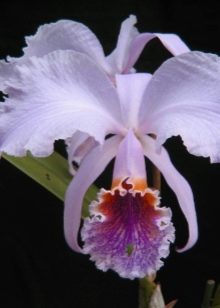

Beautiful and, as a rule, rather large flowers are symmetrical in shape. The flower has 3 sepals (sepals), 2 lateral and 1 upper. There are three petals in orchids - two lateral (petals) and one in the form of a lip (labellum), located in the lower part of the flower and have a wide variety of shapes, depending on the species.Inside the lip, which, as a rule, has a brighter color in comparison with the petals, there are the genitals of a flower - polinium. Orchids bloom for two, and some species for three weeks.

Description of popular species
All orchids, and the genus Cattleya is no exception, are either epiphytes that grow on other plants, or lithophytes that prefer to grow on rocky surfaces.
Cattleya hybrid (Cattleya hybrida)... This type of orchid is perhaps the most diverse in terms of the number of bred hybrid forms and the most popular among flower growers. To obtain numerous varieties of hybrid Cattleya, Cattleya lipped was used as a reference.
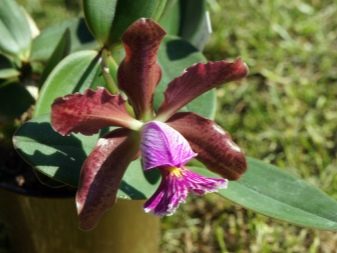
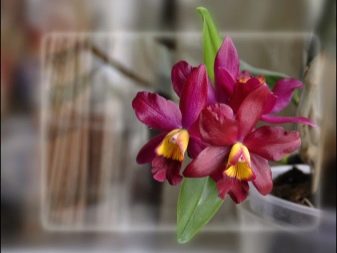
Large-flowered cattleya labiate (Cattleya labiate) refers to epiphytes. The pseudobulbs of the plant, the size of which varies between 13-25 cm, have the shape of a slightly flattened spindle, and their surface is covered with membranous scales with a shade of greenish-gray. Narrow (7-8 cm) leaves with a small cut on the apical part are oval, their length does not exceed 23-25 cm for the entire period of growth.
The most attractive in orchids, of course, are the flowers exuding a pleasant aroma. With a lilac or pink color, the sepal petals are shaped like a lancet or an irregular oval with slightly wavy outer edges. The lower petal (lip) is shaped like a funnel. The presence of a bright purple-crimson spot on the inside of the lower lobe and a pale yellow mark with red streaks towards the center of the lip is the hallmark of Cattleya labiate. The diameter of the flower varies between 12-17 cm, the size of individual specimens reaches 18 cm.



An equally famous species is orange-red cattleya (Cattleya aurantiaca)... This type of orchid is quite large. With good care, its stems can reach a length of 40 cm, and the leaves - 18 cm. The pseudobulb, which looks like an irregular oval with a thickened upper edge, gives rise to two oblong-shaped leaves with an inconspicuous notch in the apical part and a short peduncle.
On the peduncle there are small, only 4 cm in diameter, flowers, framed by lanceolate oblong petals and sepals. The lower lip in the form of a narrow funnel practically does not differ in color from other petals, except for a small area located closer to the pharynx, where there are small strokes with a bright red or brown tint on the main background.
Cattleya aurantiaca is often used to breed new varieties of orchids that differ in color from their progenitor.



Another type of Cattleya can be safely attributed to the most common and beloved by many growers - this is cattleya forbesii... The length of the stems in this species does not exceed the 25-30 cm mark, and their shape resembles an elongated spindle. Forbes orchid belongs to two-leaved plants. In shape, the leaves are similar to an elongated oval with a blunt outer edge, their length is in the range of 13-15 cm, and their width does not exceed 4-5 cm.
The inflorescence short in length carries 2, and in some cases 6 small in diameter (about 10 cm) fragrant flowers. The sepals and 2 side petals on the outside range in color from yellowish olive to light chestnut shades.
The lower petal (lip) differs from them both in color and shape. The outer side of the 3-lobed lip is colored pale beige with a pink tint, and from the inner side along the edge the orange smoothly turns into pale yellow. The shape of the lower blade resembles a triangle with smoothed corners and a wavy lower edge, on the inner part of which the color from bright orange with brown strokes changes as it approaches the edge to pale yellow.




Some similarities in appearance with the Cattleya Forbes have Cattleya luteous forb... The flowers, or more precisely, the sepals and 2 side petals, are painted in a delicate olive color and coincide in shape with the Cattleya Forbes. The only difference is in the color of the lip - on the inside, beige and yellow shades prevail, and the fringe along the edge is either pale yellow or white. This variety blooms 2 times a year and is perfectly adapted for growth and breeding at home.
Thanks to the crossing of Cattleya forbesii with the species Cattleya harrisoniana, an equally popular and beloved species was bred Cattleya venosa... This multi-flowered hybrid is very similar in shape and color to the sepals and petals of Cattleya forbesii, but the prevailing tones are often pinkish-brown.
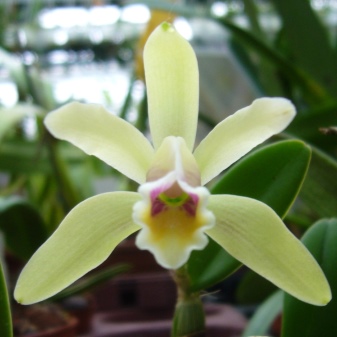
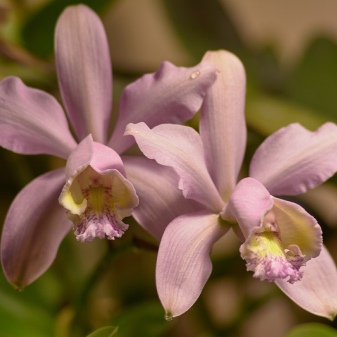
One of the tallest plants of this genus is rightfully considered Cattleya bicolor... The height of a mature plant reaches a one and a half meter mark; taller specimens are also found in nature. The shoots themselves grow up to 70-75 cm in length and give rise to two, sometimes three leathery narrow leaves, growing up to 18 cm in length and up to 5 cm in width.
On a short (up to 20 cm) peduncle, 2-8 fragrant flowers develop. The sepals and side petals are brown with a greenish tint, and the spoon-shaped lip can have a variety of shades: white, purple, carmine red, violet.
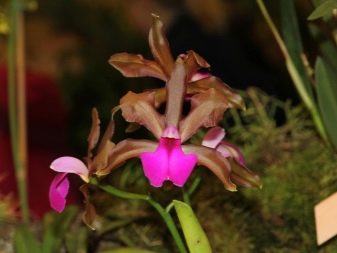

A fairly tall plant is considered Cattleya trianaei, in a sexually mature state, its growth is not less than 1.5 meters. The diameter of the flowers ranges from 15-20 cm. The delicate pink color of the sepals and side petals contrasts with a bright crimson lip with a golden or yellow spot located closer to the center. The orchid is characterized by a winter-spring flowering period.
No less famous Easter cattleya (Cattleya mossiae)... The plant has rather large (15 to 18 cm in diameter) flowers. The color of the petals and sepals varies depending on the variety. There are white, pale pink and lilac specimens. The lip is shaped like a narrow funnel with a wavy edge with a bright yellow spot in the center and a purple color along the edge on the inner surface.
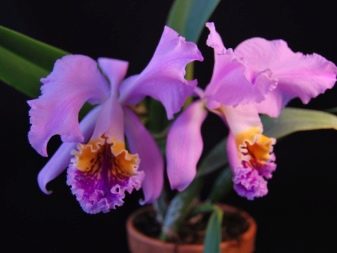
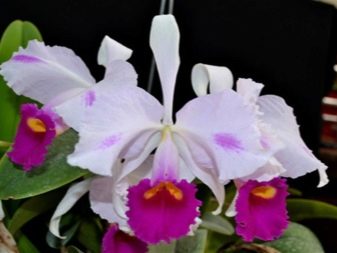
Cattleya earl imperials is a cross between Cattleya trianaei, Cattleya mossiae and Cattleya qaskelliana. A well-known and beloved variety, it is distinguished mainly by white petals with double-velvety edges. The inner side of the labellum (lips) is marked with a bright yellow spot located closer to the central part.
Another equally well-known species is cattleya bowringina... The height of the stems with oval-shaped pseudobulbs is about 75 cm. The flower grower, whose length does not exceed 25 cm, bears several flowers, predominantly lavender. When crossed, orchids were bred with dark purple, blue and light lavender flowers.
To date, about 100 varieties of Cattleya orchids have been bred. The most famous varieties include Baudelaire, Maxima, Green Emerald, Astilba and Godezia.



Home care
Pleasing with a variety of shapes and shades, orchids from the genus Cattleya are more capricious and demanding to care for than other types of indoor plants. It is both difficult and pleasant to look after them. There are many factors affecting the growth, flowering and longevity of Cattleya, so it's worth researching them all before buying.
Orchids are very fond of bright light, but cannot tolerate exposure to direct sunlight. The light should be soft and diffused, otherwise overheating cannot be avoided, which can lead to the death of the plant.
At home, an orchid is usually installed on a windowsill. If the window is on the south side, then it is better to cover the plant a little from direct sunlight. The western or eastern position of the window opening is the best option for the growth and flowering of orchids.


In the warm season, the orchid is best placed not on the windowsill, but near it, away from direct sunlight, or on a glazed loggia with constant access to fresh air, but without drafts.
The length of daylight hours is directly related to the flowering period. Conventionally, Cattleya is divided into 2 types: autumn and spring. Autumn Cattleyas (which mostly include single-leaved plants that prefer to bloom in the fall) do not require a long recovery period. For spring types of orchids (these mainly include two-leaved Cattleya), the flowering period falls in the spring, their dormant period lasts a little longer than that of autumn types.
In the winter season, when most species of orchids enter a state of dormancy and daylight hours are greatly shortened, it is not only possible, but even necessary to additionally illuminate the space around the Cattleya.
Fluorescent lamps are often used as a tool. With their help, you can increase the daylight hours for a plant up to 10-12 hours.
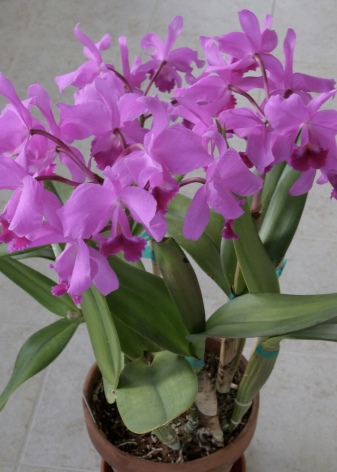
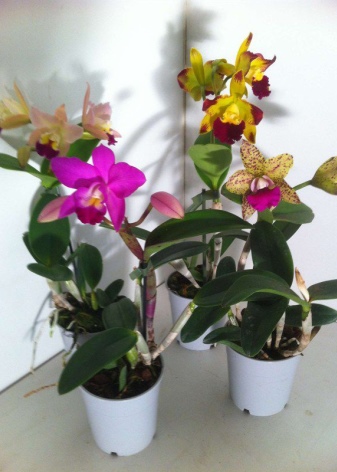
Temperature is another factor affecting the growth and flowering of Cattleya orchids. The favorable temperature for plant growth and development depends on the time of year and day. In summer, the temperature of the surrounding space in which the plant is located should vary between 21-25 ° C during the day. At night, a temperature of 17-18 ° C is considered favorable for Cattleya. For the winter season, when the plant is at rest, the daytime temperature should be in the range of 16-18 ° С, and the nighttime temperature should not fall below 12-13 ° С.
There are certain temperature ranges for orchids. The minimum critical point is considered to be a temperature of + 5 ° С, the maximum should not exceed a mark of + 30 ° С. The difference between night and day temperatures of more than 5-7 ° C can lead to the death of the plant.



Water is not just a chemical compound of oxygen and hydrogen, it is a necessary substance, without which the vital activity of any organism, including plants, is impossible. Orchids are moisture-loving plants, therefore sufficient moisture must be provided for their good growth and development. To provide the orchid with moisture, not only regular watering, but also spraying is suitable.
Depending on the season, the amount of moisture required by the plant should vary. On hot summer days, watering and spraying is often carried out. For watering, the Cattleya is immersed in a container with water at room temperature for 10-15 minutes. You need to spray orchids at least 2 times a day, carefully, trying not to get on the inflorescences.


In the winter period of dormancy, when the ambient temperature does not exceed 16-18 ° C, the frequency of watering should be minimized, since the cool air does not promote the absorption of water by the roots. At 10 degrees, it is better not to water the orchid at all (a small supply of water is contained in the pseudobulb), but at the same time do not forget to monitor the condition of not only the false bulb, but also the leaves. The frequency of watering also depends not only on the season and temperature, but also on the composition soil.
Cattleya, growing in a substance that contains bark, needs watering every 2, and for some species every 3 days.
With the help of watering, the plant is provided not only with water, but also with feeding. Intensive growth and flowering are precisely those periods when the plant needs feeding most of all. It is enough to feed the orchid with fertilizer diluted in water once a week (for some species, once every 2 weeks), reducing the recommended concentration.


The type of fertilizer must be selected depending on the phase of plant development. For the growth period following the dormant period, predominantly nitrogen-containing fertilizers are applied. During the formation of pseudobulbs and active flowering, the plant needs potassium-phosphorus fertilizer. It is better not to feed the orchid at rest.
Transfer
The need to transplant a plant can arise for several reasons: an overgrown bush, a spoiled substrate, formations in the form of rusty spots on the roots, or an orchid after purchase. The planned transplant should be carried out at least once every 2 years, before the phase of intensive growth.
For this procedure, it is necessary to prepare a transparent container with several drainage holes. If the transplant is associated with the growth of the main and aerial roots, then it is better to choose a pot for such a plant 2-4 cm larger than the previous one.
As a soil, you can use both your own substrate and a special mixture for orchids bought in a store.
To prepare the substrate yourself, you will need several ingredients. The main component of the substrate for the orchid are pieces of pine and spruce bark.... Depending on the type of mixture, the volume of the bark ranges from 25-50%. Polyfoam, depending on the composition, occupies from 15 to 20% of the volume, is necessary to maintain a certain level of humidity. Expanded clay used as drainage usually occupies about 15% of the total volume of the substrate. Charcoal, peat, sphagnum moss, coconut fiber and even oak leaves can be used as additional components.

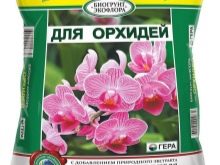

The most common is a mixture of bark (50%), foam (20%), peat (10%), expanded clay (15%) and charcoal (5%)... For plants planted on the south side, a soil containing coconut fiber (15%), bark (45%), sphagnum moss (15%) and oak leaves (15%) is more suitable.
Cattleya transplant is conventionally divided into 2 stages: preparatory and main. For the preparatory stage, in addition to collecting or buying soil, choosing a container, it is necessary to prepare the plant itself, namely, not to water the orchid for 1-2 days before planting.


The main stage of the transplant is carried out in several steps. First of all, carefully free the plant from the pot and remove the old substrate from the roots. Then we carefully examine and probe each root. We cut off dried, rotten, stained roots, and process the cut site with charcoal, previously ground into powder.
Now you can start laying the ground and planting the plant. At the bottom of the selected container, expanded clay and foam are first laid. Next, you should pour in larger pieces of bark and place the plant itself, covering it with smaller pieces of the substrate.
When planting, it is better to move the orchid closer to the wall so that there is room for the development of the stems... Various types of supports can be used as support for the orchid.
After all the manipulations, the Cattleya is left alone and not watered for 7-10 days.

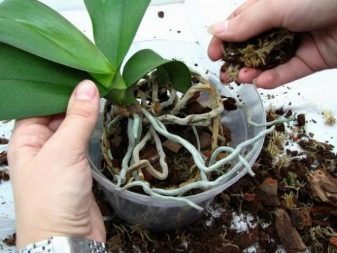
Reproduction methods
Reproduction of the Cattleya orchid is carried out in only two ways: by cutting off a section of the main root and using seeds. The seed method of reproduction is one of the most laborious, long-lasting and hardly feasible at home methods of reproducing this beautiful plant. Rhizome division is a more affordable and easy way even for novice growers.
The best time to cut the root is the phase before the formation of new roots. It is customary to combine the planned transplantation and reproduction in order to avoid unnecessary stress for the plant.
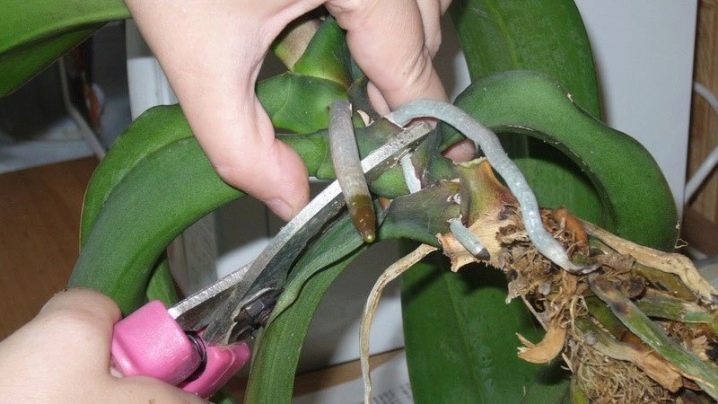
The orchid is removed from the pot and lowered into a prepared container with warm water for several minutes, while examining the root system. After removing diseased and dead roots and treating the cut with coal, the plant is left to dry.
The clipping site should have 2-3 pseudobulbs and some healthy aerial roots... Using a pre-sterilized knife or secateurs, we cut off the selected area and process the cut points. We plant the cut off baby in the substrate, observing all the transplant rules.
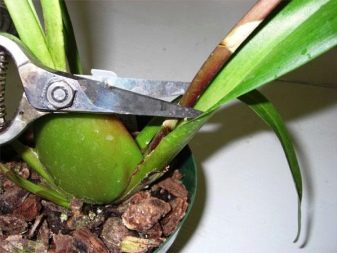
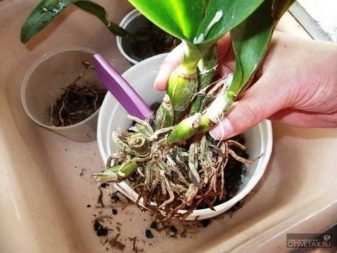
Possible problems
Sometimes proper care is not a guarantee of healthy growth and lush flowering of Cattleya, and until recently, a beautiful orchid begins to quickly "wither". There may be several reasons for this.
First of all, these are, of course, diseases, the occurrence of which is due to elementary non-observance of the rules of care. Black rot, affecting primarily young shoots, can occur due to overheating of the root system, high humidity levels (more than 60%), an overly dense substrate and overfeeding of the orchid with nitrogen-containing fertilizers.
Gray rot differs from other diseases by the presence of spots with a gray bloom on the flowers. The appearance of gray rot is possible with high humidity, constant overflow and low ambient temperatures.

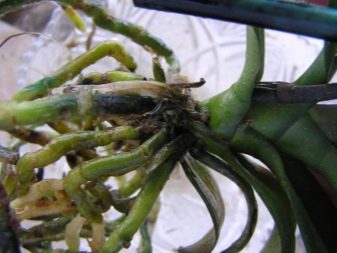
If all the roots have died, then you can try to restore them.... Resuscitation of the roots, although it will take a long time, will give a chance for the plant to recover. To do this, the orchid is soaked in water for 2-2.5 hours. The appearance of roots means the end of the soaking process. The roots that have reached 6 cm in length (at least 3 pieces) must be planted in a prepared substrate (bark, moss, charcoal) and observe the growth.
With spider mites, aphids and scale insects that infect leaves, shoots and inflorescences, a solution of the insecticidal preparation "Aktelik" helps to cope.
Without violating the rules of caring for an orchid, you can avoid not only diseases, but also get a beautiful and constantly blooming Cattleya for many years.
For more information on the secrets of growing Cattleya orchids, see the next video.































The comment was sent successfully.